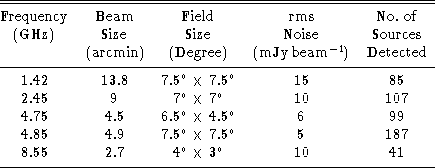Table 1 (click here) lists the characteristics of the five SMC surveys used in this
study of discrete sources. We consider the region of ![]() 6
6![]()
![]() 7
7![]() centred
on Right Ascension (B1950)
centred
on Right Ascension (B1950) ![]() and Declination (B1950)
-73
and Declination (B1950)
-73![]() 00
00![]() 00
00![]() which cover
which cover ![]() square degrees between RA
square degrees between RA ![]() to
to
![]() and Dec
and Dec ![]()
![]() 40
40![]() to -76
to -76![]() 20
20![]() .
.

Table 1: Parameters of the five radio surveys of the SMC
The four primary surveys of the SMC at 1.42, 2.45, 4.75 and 8.55 GHz were
made between 1988 and 1991 using the Parkes 64-m telescope fitted with the
Australia Telescope National Facility's prototype receiver package
(Haynes et al. 1986, 1991). Observations at these four
frequencies were made by scanning the telescope across the SMC in right
ascension and declination at driving rates in the range 1![]() to 4
to 4![]()
![]() . At each observing frequency we used 1-s integration for each datum
point and made 2.3 measurements across each beam size in the scanning
direction. The beam size ranged from 13.8
. At each observing frequency we used 1-s integration for each datum
point and made 2.3 measurements across each beam size in the scanning
direction. The beam size ranged from 13.8![]() to 2.7
to 2.7![]() depending
on the observing frequency (Table 1 (click here)). The resulting images exhibited some
scanning ``noise" (caused by variations in the absorbing emission
characteristics of the Earth's atmosphere) which depended on the scanning
direction. These scanning effects have been efficiently removed by the
so-called ``basket-weaving" technique developed at the MPIfR (Sieber et
al. 1979).
depending
on the observing frequency (Table 1 (click here)). The resulting images exhibited some
scanning ``noise" (caused by variations in the absorbing emission
characteristics of the Earth's atmosphere) which depended on the scanning
direction. These scanning effects have been efficiently removed by the
so-called ``basket-weaving" technique developed at the MPIfR (Sieber et
al. 1979).
Calibration was undertaken by frequently observing sources with known integrated flux density and position, and by mapping them in the same manner as for the MCs (Haynes et al. 1991; Paper IV). The main source for flux-density calibration was Hydra A. The adopted integrated flux density scale is that determined by Baars et al. (1977). As secondary calibrators (mainly used for pointing calibration) we chose the sources 3C 348, 3C 353, B0332-403, B0843-336, B1819-67, B1934-638 and B2356-61.
For the 1.42-GHz survey, the primary calibrator was Virgo A (for which an integrated flux density of 213 Jy was assumed), while the secondary calibrators were Hydra A, 3C 138, B1414+11, B1814-63 and B1819-67 (Haynes et al. 1986).
Our fifth study at 4.85 GHz used a public-release FITS image of the SMC
obtained from the PMN survey. The PMN Southern Survey was made with the Parkes
telescope in 1992 (Griffith et al. 1991, 1994; Griffith &
Wright 1993; Wright et al. 1994). Radio images between
declination range -88![]()
![]()
![]() at 4.85 GHz are available in FITS
format with a 4.9
at 4.85 GHz are available in FITS
format with a 4.9![]() initial resolution and an rms.
noise between 5 and 13 mJy
initial resolution and an rms.
noise between 5 and 13 mJy ![]() . We have taken these PMN survey FITS images
which cover the region of the SMC and used the NOD2 source-fitting package to
determine source positions and flux densities.
. We have taken these PMN survey FITS images
which cover the region of the SMC and used the NOD2 source-fitting package to
determine source positions and flux densities.